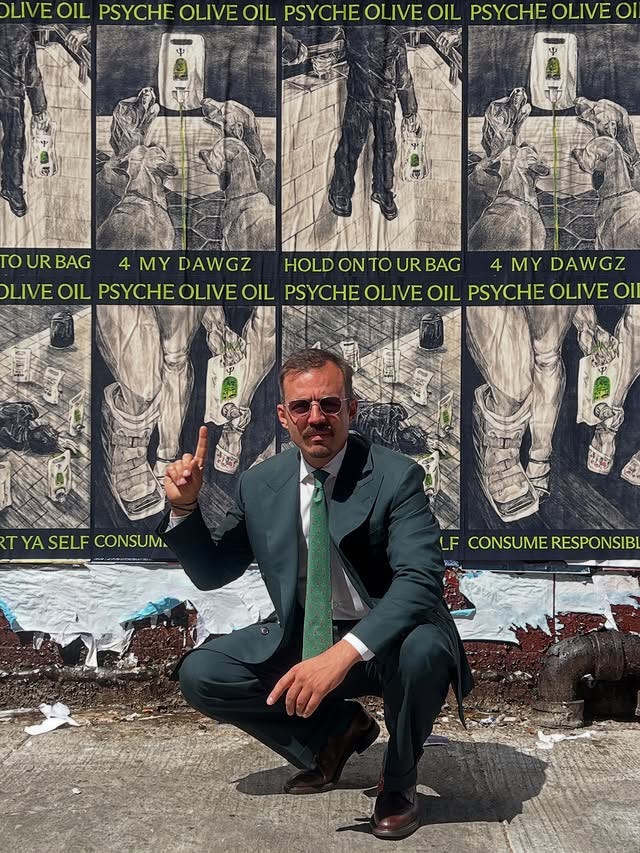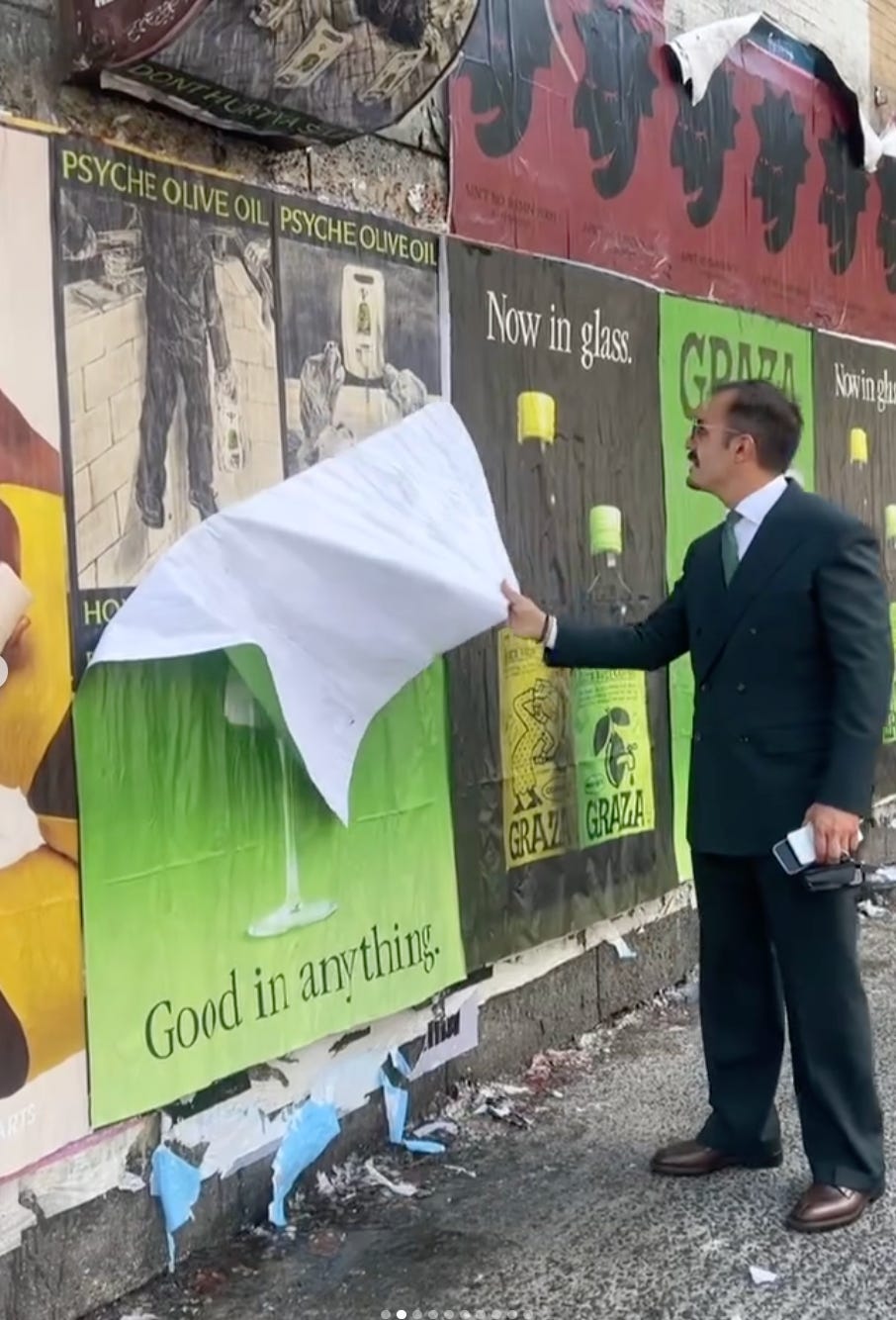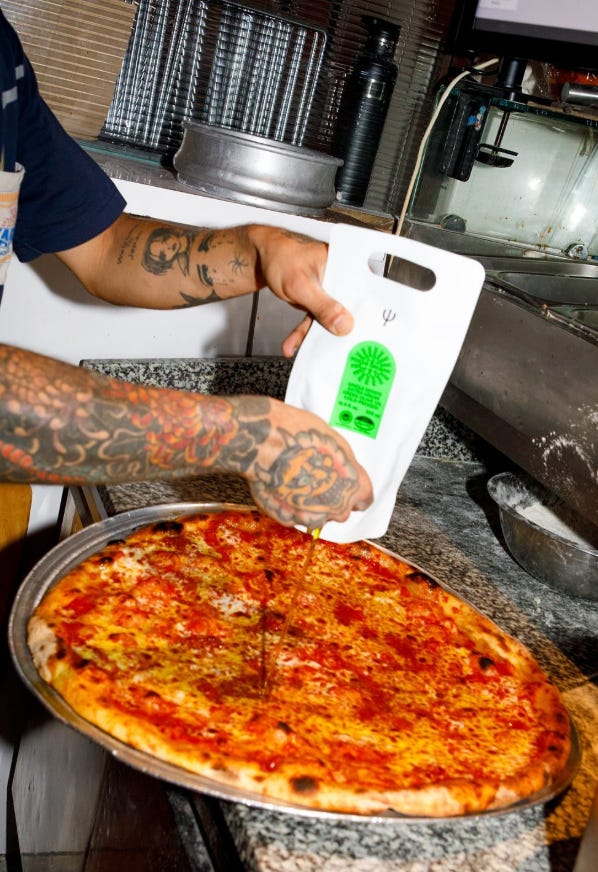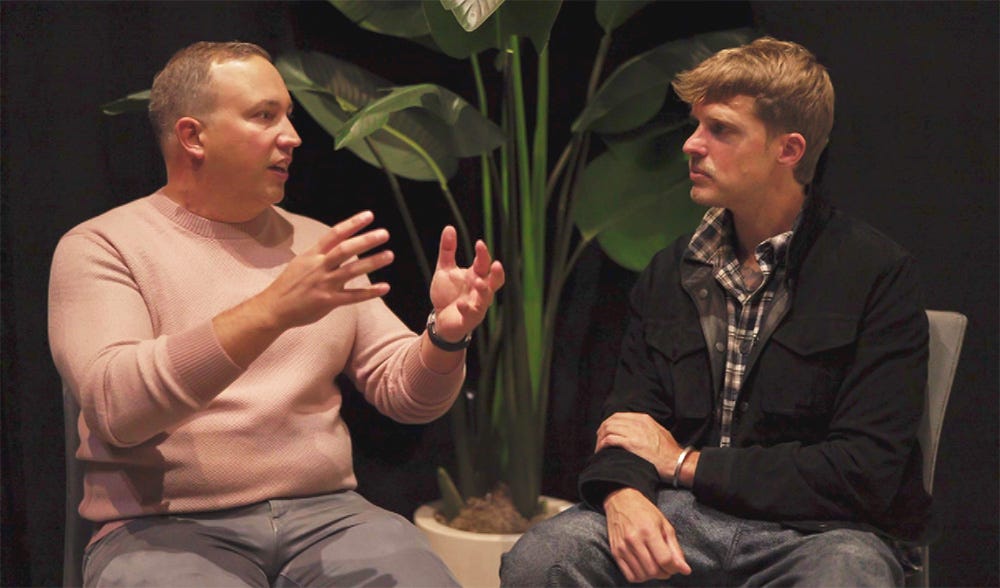Olive oil wars, influencer marketing step by step, + a guide to content cameras
With an interview on AI in marketing with Kipp Bodnar, CMO of Hubspot
Hello friends! This week we dive into
the influencer marketing playbook (with a full download)
a few years after Graza brought attention to the Olive Oil category, a new crop of brands are emerging
the best cameras (new and old) for content creation
a content format you should use
and a thorough interview on how to use AI in marketing with Kipp Bodnar, the CMO of Hubspot
Let’s begin!
Influencer Marketing Program Guide
Every brand asks "what marketing should I concentrate on first," and then quickly to, "where do I scale?"
Here’s the path we suggest…
1. You need to get one profitable scaling channel of the two below
Owned organic social - getting views through your own social media and team accounts, typically on IG or TikTok
Paid ads - paid advertising on online platforms - most often Meta, Google, or TikTok
2. Then from there, you graduate up
Add on external parties that pour the fuel on the fire of both of the above giving more conversation happening about your brands online organically, and giving you more tools to advertise in step 3
Paid influence - paying influencers to promote your product
Seeding - giving product away for free
3. As these succeed, utilize that content as part of your paid funnel
Whitelisting - running ads on others content about your product, shown from their account
Repurposing - taking content from the network it started on (a TikTok shop influencer post for example) and testing it on other networks
90% of brands pushing both online and retail sales don't need to do more than the playbook above, and instead need to focus on the scale and quality of the execution there, and shifting it in real time as the goalposts of content online change.
In section two especially, brands have a hard time figuring out the playbook?
How do you quantify influencer marketing?
What tools should I use for my programs? How do I negotiate without compromising the relationship? What KPIs should I report to my org?
Who can help me execute this?
To help with this, our friend Josh and the team at Aligned Growth Management, an influencer management agency who have worked with Ghost Energy, Hexclad, FabFitFun, Owyn, Heart & Soil put together a detailed Influencer Marketing playbook free guide that breaks all of the above down.
Grab it below and get your blueprint to properly integrate influencer marketing into your brand's growth arc.
This segment is in partnership with Aligned Growth Management
Olive oil wars
The devil works hard, but the internet works harder. And we are grateful for that!
Graza has had the olive oil world in a chokehold for a number of years now, positioning itself as the original challenger brand to disrupt a massive market.
I think we loved their approach because they made this category feel fun, playful, and quirkily branded. And yet, only a few years in, we’re watching the cycle flip.
Psyche is going right for the jugular.
They’re not trying to out-Graza Graza with a “better” product, because that doesn’t matter. Instead, they’re flipping the script with guerrilla-style street marketing that feels more like a streetwear drop.
Whether it’s the ripping off the Graza wheatpasting in NYC to reveal their own branding to how they collab’d with Scarr’s Pizza during Copenhagen Fashion Week.
…They’re using content and marketing to send a clear message that Graza is the old guard and Psyche is the cool kid.
And the lesson for all brands (especially challengers) is to remember how quickly the culture wheel turns, and how even the disruptors can get disrupted.
It's not about doing what the incumbent did better; it's about doing something provocative and different in the way you present your brand.
In any case, bring on the shithousery; we are here for it!
A Creative Director’s Guide to Cameras
If you’ve been seeing campaign after campaign shot on vintage camcorders, and kids wandering around the streets of New York in LA with mini-DV in hand, you’re not alone.
In this video Oren breaks down new and vintage cameras for creatives based on workflow and what you’re looking to achieve.
Someone, please use this content format
I’ve been thinking about this for months.
There HAS TO be a brand that can use the content format below to talk about mental and physical health with a backdrop set in nature.
We discovered Nature Talks earlier this year and have loved their approach to normalizing conversations around mental and physical well-being in connection to nature.
They post previews on IG and the full episodes on their YouTube channel.
It’s had us thinking how cool it would be to see a brand utilize this format to own a conversation connected to their brand, WITHOUT explicitly promoting their products in it.
Anyone in the wellness or outdoor world could do this, not just clothing brands.
Here’s another fun example. British outdoor brand Fera has filmed a mini docu-series about Matt Sommerville, a bee conservationist who has devoted his life to preserving wild bee populations by building portable stations where the bees can dwell.
He’s obviously wearing the brand’s product, but it’s not about the product, and that’s why people love it.
An unfiltered conversation with Hubspot's CMO about AI and the future of marketing
Kipp Bodnar helps steer marketing at one of the world’s most influential SaaS companies, and he’s also a creator in his own right, running the Marketing Against the Grain podcast.
We cut right to the heart of what’s shifting in marketing today with the rise of AI as a real tool in workflows, unpacking HubSpot’s new “loop marketing” framework, and why leaders and creators need to operate more publicly than ever before.
It’s a candid look at how one of the industry’s top voices is navigating disruption and what’s next for marketers trying to build in this new landscape.
So, here’s Oren’s convo with Kip.
Introduce yourself!
I'm Kipp Bodnar, Chief Marketing Officer at HubSpot, where we make marketing, sales, and customer service software.
You're also a creator in your own right
Yep, I'm the host of a podcast called Marketing Against the Grain. Go ahead, subscribe please, haha…
I don’t know about you, but I feel like I'm way more productive as a marketer now than I was even a year ago because of AI tools. Just curious, what are the things that help you out the most?
Claude projects! I create very specific projects, particularly when there are repeatable tasks, especially if they're collaborative. I have a project focused on our HubSpot target audience and ICP.
Whenever I'm working on a project, I get instant feedback, which is like having my own focus group.
But the biggest thing I honestly freaking love right now is Perplexity Comet. I use their browser all the time. There are shortcuts in it where you could basically repeat anything recurring.
You write these as detailed prompts, and then you can just run them on whatever page you're at, which gives you a huge leg up with shortcuts.
I also wanted to discuss your new Loop Marketing announcement and the idea of a changing marketing funnel. We've heard this for a while, that “The funnel's changing” or “the funnel's dead,” but you actually made a plan for what the future looks like.
Yeah, we hear a lot at HubSpot, about brands losing bunch of traffic over the last year or two due to all the disruption happening in Google Search.
And then, if you're like me, I find the SEO and marketing subreddits fascinating, as they offer some telling insights.
And it's everybody saying things like “my pay ad costs are up,” or “my email's not working,” or “my views are down.”
And it’s become a bit of a dark time for some brands with so much changing.
But my team and I have spent the last couple of years running constant experiments. I'm a firm believer that when things change, marketers win because there are numerous new opportunities that are early and not yet saturated or overcompetitive.
So, I was like: what are those opportunities, and how do we package them together?
That’s how we came up with a framework called Loop Marketing that outlines how to leverage AI to excel in marketing in the post-AI era.
We basically said: take your taste and what you know about your audience, then use AI to help you create awesome marketing assets or campaigns.
Then, use AI to help tailor those in a bespoke way.
Two things I was really happy to hear in your analysis is using AI as a lead or referral source inside the platform, and second: AEO recommendations.
Yeah, in this new wave of search, the old SEO rules still apply. You still need public content. But now, that content is for humans and robots. Not just Google crawlers. These are real, smart, agentic robots that get context.
And so now, working in public becomes the first step. If your info isn’t public, those agents can’t access it. They won’t know you’re a resource.
It also changes the metrics. We used to talk about search rank or clickthrough rate. Now it’s: “Am I getting cited by the LLMs?”
Someone might search a high-volume term and not click anything, but they’re still getting an answer. What is that answer?
And what we’re seeing is that you’re being seen. Those people are showing up later via direct traffic. If you’re lucky, they click the citation link. But even when they don’t, they remember you.
Here’s a crazy example: we’ve seen our 404 page visits spike, because LLMs were hallucinating citations. Wild. I was literally working on a newsletter this morning, asked ChatGPT to find more sources, and 75% were gone… video removed, link dead, etc.
But the info still lives in the robots. That was a fascinating realization.
Pro tip: I want to build (and I’ll share this with just you guys): a no-404 AI flow. If someone encounters a dead link, use the parameters to infer the intent and generate a live page on the spot.
Right! Just stitch together whatever they were referencing, so you at least give them something.
Exactly.
Because we shouldn’t have 404s anymore. But these citations work differently now. And if the link is real and people click through, the conversion rate is way higher than traditional. Like, over 10x higher.
So yes, fewer visits, but way more valuable visits. And you need a dedicated conversion experience for that LLM/AI-driven traffic. Because it’s seriously high intent.
What else do you think is radically changing that marketers should pay attention to?
If you want to be radical, I think a lot of “company-first” brand stuff is going away.
We’re moving to people, leadership, and connection first.
It used to be that brand was primary, and everything else (the people, the style guide) supported the brand. Now, brand supports the people.
The stories they tell.
To win a market now, you’ll need a very public leadership team pushing a proactive narrative.
Kind of like the early 1900s PT Barnum-era hype, but in a good way. Really clear, high-energy storytelling.
We moved away from that because, well, you could just throw money at Meta ads and be fine. But that’s changing.
Organic still has wild leverage.
Also, waiting is dead.
When I started marketing, building a site meant waiting 6 to 12 months for Google to index and rank you.
Now you can create something valuable, and it appears in an LLM, gaining traction instantly.
What have been the most exciting tools your team has used from these new announcements?
AI + email where AI writes 1:1 emails to prospects. Game changer.
All the LLM integrations. Having all our HubSpot data in ChatGPT, Gemini, Claude, it’s freaking amazing.
Thanks for chatting!
Hyper Reports
Check out our market reports. We spend many hours researching markets, categories, and brands & products within the consumer space so you don’t have to.









Thanks for the mention! Very proud of the Hive Architect